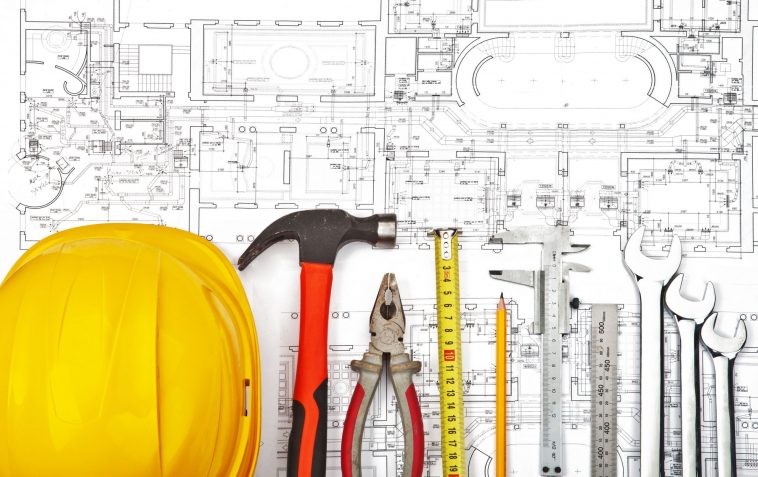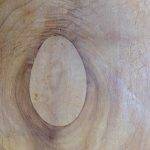There is nothing more frustrating than trying to do a job with the wrong tools. It makes the simplest of jobs infuriating. Usually a job that should take ten minutes is now taking an hour, as you try to loosen off the last screw with a butter knife! DIY should be fun, inspiring and fulfilling. In this article I will highlight what I think are the essential tools that most households should posses to tackle most DIY jobs.
I don’t believe the old saying of a bad carpenter blaming his tools. In my opinion, a good carpenter wouldn’t have bad tools. Some people see tools as there to do a job, some can get quite obsessed and buy a tool for every conceivable job. Whatever bracket you fit into, try to buy the most expensive tool you can afford, they will last longer and work better.
Measuring Tools
The humble tape measure. Where would we be if we couldn’t measure the corner of our kitchen to fit in a sideboard, or the chimney breast for our new TV. Tape measures usually have both inches and millimeters. I’m from the school of millimeters and use it the majority of the time. I will however revert back to feet and inches when measuring long distances. Sometimes its easier to remember 7′ 6″ than 2290mm or remembering 4mm as opposed to 7/8″. This will be one of your most used tools. Have a couple around the house if you can, they’re cheap as chips and because used so often can be mislaid easily!
Steel rule. The steel rule is great for working on smaller projects like building a spice rack or repairing a stretcher on an old chair. They are more accurate than a tape measure and again come in millimeters and inches or both if you want. I often use mine to spread glue on a project and wipe clean for next time.
Pencils. Not exactly a tool, but how often have you had the tape measure stretched out across a length of timber only to find that you’ve no pencil. Are you the kind of person who picks up a nail or even a sharp stone to mark a line!? Didn’t think so! Keep a box of pencils handy. I say a box because i usually spend half of my time on the job looking for pencils that have fallen or covered somewhere in sawdust. I eventually bit the bullet and bought a box, my time on the job has now halved! HB are a good all rounder which will leave a clear mark.
Try-Square. A try-square is used for marking a perpendicular line across the workpiece. They come in all different blade lengths depending on the work you are doing. A good all rounder would be a 200mm length blade. Typical uses for this tool are squaring lines for hinges, cutting shelves to length, fitting mortise locks and trimming window boards. Being a traditionalist, I tend to go for the wooden handles. Some have a brass strip to protect the wooden handle from knocks and abuse. Don’t drop try-square if possible. Doing so will knock it out of square and render it useless. It is possible to knock it back into square but you need a reliable engineers square to test it for exactness.
Level. What would the world be like without checking for level and plumb? A level makes sure that fixtures are hung perfectly vertical and horizontal. It can be used for simple jobs such as hanging a picture and as complex as checking the levels of trusses in an oak framed house. A level is an important piece of toolkit that is a must in every house. Again, these come in all different shapes and sizes and prices range from €10 to €200 and above. The difference between these two levels is the accuracy. I have fallen into the trap of buying a cheaper level and can assure you that it is now binned. There is no substitute for quality. It is quite satisfying chasing the bubble into the centre and even more so when a client picks up a level to check your work and it falls straight into the centre.
Handsaws. The days were a carpenter would have a selection of saws for different jobs is gone. A rip saw for sawing with the grain, a cross cut saw for going against the grain, a tenon saw for bench work and a panel saw for sheet material such as plywood or chipboard. These saws would be in the carpenters toolkit for his entire career. He would hand file the teeth of the saws to sharpen them and then set them to the way he preferred. There is something honest and pure about this that seems absent from the saws you buy today. Today the saws are referred to as “throw away” saws. You use and abuse the saw, cut with the grain, across the grain, cut through branches of trees, cut through plastic, PVC and then just bin the saw afterwards. They are fantastic tools and extremely versatile. Incredibly sharp, durable, cheap and plentiful. For the traditionalists out there, you could spend €300 on three saws for different jobs but for the rest, €10 should cover it!
Coping saw. The handsaw above will suffice for 90% of the work around the house. If however you’re feeling creative and you want to introduce some curved work on your projects, a coping saw is a great little tool for a good price. The coping saw is unusual in that it cuts on the pull stroke. The teeth of this saw point towards the user. It can also cut 360* and because the blade is so small it can cut tight curves. The blades are disposable and if broken can be replaced in seconds. A nice tool to have in your toolkit.
Plane. The plane is without doubt my favourite tool. A plane can transform rough timber to smooth in minutes, it can reduce the width of timber in 0.1mm if set up correctly and can keep give you a workout at the same time. Around the home it is great for shaving sticking doors, giving old boards a new lease of life and leaving a polished surface on all your DIY projects. When it comes to planes, the skies the limit. You can buy old smoothing planes off eBay for €10-20 or buy a premium tri-plane for €450. A sharp blade and a flat sole and you can do wonders with a plane. Replacement blades can be bought and fitted to old planes and there are several videos online demonstrating the steps involved in returning an old plane back to new. It is one of the most satisfying tools to use as you uncover the character and grain of the timber that was lying under several coats of paint.
Chisels. A set of chisels are great at removing trenches or providing recesses as required for a hinge for example. They are intended to pare or remove timber and can
be used in conjunction with a mallet for extra heft. Typical uses around the home would be for paring down dowels, trenching studs or joists for laying pipes or cables and tackling the more adventurous jobs like hanging doors and fitting mortise locks. Do not however, use your chisels for opening screws or tins of paint, not only is it dangerous but you will damage the cutting edge of the tool.
Power tools. Power tools make jobs easier and faster. They have dropped considerably in price and are now more affordable than ever. The power tools that i feel are necessary for the average DIYer would be the jigsaw, SDS drill and the orbital sander. The jigsaw is designed for cutting curves and is ideal for cutting internal curves. By drilling a series of holes in a piece, the blade of the jigsaw can be inserted into the holes and the waste cut away. A typical job for the jigsaw would be the cutting of a hole in a counter top to accommodate a sink or a hob. Although designed primarily for curved work, several carpenters I know would use nothing else for cutting down doors and trimming straight edges.
A drill is one of the tools i couldn’t do without. I have three drills in my toolkit and these are the first tools I put in the car when doing a job. The first drill is a 12V cordless drill. This has to be the greatest invention in terms of tools in the past number of years. It makes short work of unscrewing and can dismantle objects in seconds. More suitable for philips or pozidrive screw heads due to slippage on flat head screws. The second drill is an 18V model. This is used for drilling holes in timber or steel. Not ideal for drilling masonry as the impact can disturb the inside workings of the drill. The last drill is a corded model that I use for drilling masonry for hanging fixings on solid walls. This is an SDS drill that makes short work of drilling through walls.
Lastly is the sander. There are great deals on these at the moment. I recently picked up a triangular shaped sander with several free sanding pads for €20. These are ideal for sprucing up old woodwork, removing old paint and getting a smooth surface before applying a finish. Sanders save on a lot of elbow grease and sweat! It can be a messy job and quite hazardous so wear a mask and safety goggles.
So these are my choices of tools to tackle most jobs around the house. There are also spanners, sockets, wrenches and other bits to gather for your collection. There is an array of equipment out there from most DIY shops. Enjoy browsing and watch your skills develop and improve with your new collection of tools.


